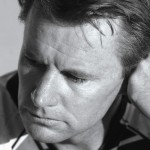HOME PERFORMANCE
WORDS BY SCOTT BISHOP
With several Australian riders doing the opening rounds of the AMA Supercross Championship there has been plenty of interest at home in the performances. Sure, Matt, Jake and Adam haven’t set the world on fire over there and probably not quite lived up to expectation but there are a few circumstances that do have some control over their performances.
All three have suffered injury at some level and been forced to miss races but maybe the biggest issue facing riders wanting to race supercross in the US is the lack of supercross exposure riders get in Australia.
For the past 10 years, the MX Nationals has been and still is the most sought-after prize. It’s a long-standing championship that has continued to grow while the Australian Supercross Championship has been shuffled down the pole.
At the moment our racing calendar is motocross based, the first championship of the year being the MX Nationals. So, let’s assume everyone starts riding and training for the championship on January 1 (most would start earlier). We start racing in March and the final round is in the first week of September, so that’s the best part of nine months of the year riding motocross.
We then have a four- to six-week break before supercross championship starts and, with teams needed to swap suspension and prepare bikes for SX, a week or two is generally lost. We then race supercross in October and November before the bikes are returned to the teams and the clean-up begins.
So, how do we expect Matt Moss to beat the best in the world at supercross when he’s had little more than two to three months of the year training and preparing for it?
Let’s compare that to the US. Their motocross championship finishes in September each year and most riders take a break to recharge and refresh. With the Monster Cup in Vegas during October, they’re back to work before that, out on the test track working on bike development and rider skills. That continues all the way through to the start of the racing season in the first week of January and it’s 17 weeks non-stop until the championship winds up. That’s October to May on a supercross track, or eight months of the year riding supercross.
When Reed came through, the Australia racing calendar wasn’t as cut and dried as the US with SX followed by MX. But the start of every season had a range of supercross races and then it was a mixture of both throughout the year, with the Supercross Masters championship the one everyone wanted to win. So most of the riders spent the Christmas period on supercross tracks preparing for the opening two months of racing, which was always supercross. Reed was always going to succeed regardless as his goal was always the US and always supercross.
How we get a more balanced calendar is hard to answer. But, as a nation, our supercross skills have certainly dropped over the past decade and a lot of that can be attributed to the motocross focus we currently have.
RIDER VS MANAGER
This is the 10th year I’ve overseen a motocross team since I stopped racing. So I’ve raced at a professional level for 10 years and managed teams for 10 years and I can tell you now that being a rider is easier by far. I can also tell you there are lots of differences in each role.
All a modern-day rider really has to worry about these days is turning up to the race fit and ready to race and finding somewhere to practise. Maybe his biggest issue is getting to the airport on time, as city traffic can be a nightmare. Once at the airport, a plane takes them close to the venue, a car is there ready to take them to the track and is a fully prepared bike with all the things needed for race is sitting there ready to go. So, as a rider, all you need to worry about is yourself and that’s fair enough as this isn’t a team sport in many ways.
As a manager, the last person you need to think about is yourself. It’s the manager’s role to ensure everyone in the team can do their job properly and get the best results possible. So that means having the right mechanics in the team to get the best out of the bikes; having the race truck fully stocked with whatever the riders or mechanics require; having the airfares, motels and rental cars booked, even down to booking somewhere to eat the night before the race; listening and working with the riders and understanding that there are several ways to the same result and just because their way is different from yours doesn’t mean you won’t end up in the same place.
Once that’s done and everyone else is sorted, then you can look at what your needs are. Many of the team managers in Australia are former racers and, while it isn’t a difficult transition, many still struggle with it as they feel so hopeless when it comes to the most important part of the equation: the result.
We can control everything that happens up until the gate falls over. After that, we have no say in the most important aspect of racing. Watching the managers during a race is often as much fun as the racing. We all wear our heart on our sleeve and I reckon every one of us would tell you there are times you wish you could jump on the bike and just get the job done yourself. Sadly, we’re all too old and too slow to make that happen so we’re all just overexcited Mini dads now in a team uniform. And I still haven’t worked a day in my life.


